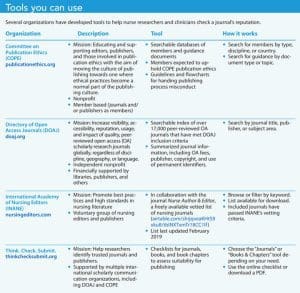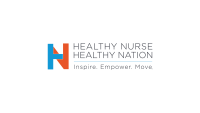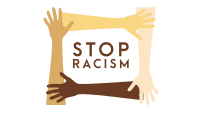Choosing best evidence requires watching for these red flags.
Takeaways:
- Predatory journals (reading them, citing them in your writing, or publishing with them) threaten the integrity of nursing research and practice.
- Most predatory journals share characteristics that can help nurses identify and avoid them.
- Many tools exist to help nurses evaluate journal quality.
Published evidence in the form of journal articles plays a critical role in evidence-based nursing. However, just because an article is published in a journal doesn’t make it automatically worthy of being used in decision-making or policy development. In addition to critically appraising a particular article, nurses also must evaluate the journal in which it’s published. In other words, beware of predatory journals.
Predatory journals refer to unethical publishers intentionally subverting many of the established standards of scholarly publishing to quickly churn out articles and collect associated fees. The number of these publications continues to rise. Oermann and colleagues have written extensively on the topic of predatory publishing in nursing. They’ve demonstrated that, in addition to citing articles from predatory journals, nurses also have taken on editorial duties for them. Oermann and colleagues also found that over 96% of articles analyzed in a sample of predatory nursing journals were of poor-to-average quality. These and other studies have confirmed that predatory publishing threatens the integrity of nursing research and practice, as well as potentially damaging the reputation of nursing researchers and ultimately resulting in inferior patient care.
Nurses should use the highest-level and best-quality evidence to inform their practice. Whether writing, citing, or reading journal articles, they must develop a keen awareness to avoid falling prey to predatory publishing, understand the key concepts underpinning the problem, know the indicators that can help evaluate whether a resource may be predatory, and use reputable tools to aid in determining a journal’s legitimacy.
Scholarly publishing practices
In general, scholarly journals publish articles written by and for scholars in a particular field. They serve as a vehicle to share research findings and allow researchers to participate in the “scholarly conversation.” Rigorous peer-review, one of the hallmarks of reputable scholarly publishing, helps ensure publication of only accurate, well-conducted research.
Open access
The evolution of journals from print-only to electronic formats ushered in the open access (OA) publishing model. SPARC (a nonprofit advocacy organization that supports systems for open research and education) describes OA as providing “free, immediate, online availability of research articles coupled with the rights to use these articles fully in the digital environment.” OA publishers typically shift the costs of publishing from the readers or subscribers to the authors, who may use personal, institutional, or research funds to pay a significant article processing charge. Many reputable and well-known scholarly journals provide the option to legitimately publish openly or are fully open access.
Various open access models exist, and the terminology used to describe them can be confusing for those less familiar with disseminating scholarly work in journals. Some fully open access journals don’t charge processing fees (platinum or diamond OA) and some do (gold OA). You’ll find traditional, subscription-based journals that offer an option to pay a fee for a particular article to become freely available (hybrid), as well as other journals that aren’t fully OA and don’t charge fees but allow self-archiving of an article in an OA repository (green OA). It’s easy to be confused about these options, especially when all of them can be completely legitimate and high quality.
In addition to journals offering voluntary OA options, since 2008, the National Institutes of Health (NIH) has required that scientists who receive NIH funding make their accepted publications freely available via PubMed Central, a publicly accessible digital archive of biomedical and life sciences journal literature. This effort ensures the public benefits from the results of NIH-funded studies.
Throughout the evolution of predatory publishing, Krawczyk and Kulczycki found that “open access” and “predatory” frequently are conflated. This was especially true in the early to mid-2010s. Many (if not all) predatory publishers use an OA publishing model, but not all OA journals are predatory. This is an important distinction to make as the scientific community moves toward a more open science model in response to scientific cultural shifts and funder mandates.
Predatory publishing defined
Given this complexity, how can we define predatory publishing in a practical way to guide nurse authors? Jeffrey Beall, a librarian at the University of Colorado, first coined the term “predatory” in relation to publishing or journals. He wrote a series of articles profiling different publishers, most of which he classified as predatory. In 2012, that list became known as “Beall’s List” and was posted on his scholarly publishing blog. However, the list created controversy about how journals and publishers were included. In 2017, Beall took it down abruptly.
Currently, the coalition organization Think. Check. Submit., which works to address issues with open access, defines predatory publishers as “those which charge authors a fee for publication with no intention of providing the expected services—such as editorial or peer review—in return.” Berger and Cirasella describe predatory OA journals as “journals that exist for the sole purpose of profit, not the dissemination of high-quality research findings and furtherance of knowledge.” More recently, Grudniewicz and colleagues developed this definition: “Predatory journals and publishers are entities that prioritize self-interest at the expense of scholarship and are characterized by false or misleading information, deviation from best editorial and publication practices, a lack of transparency, and/or the use of aggressive and indiscriminate solicitation practices.”
A clear pattern exists in these definitions: motivation by profit rather than quality scholarship. Identifying these publishers and their journals can be tricky, but several trustworthy organizations can aid in decision-making long before you submit anything for publication.
How to spot and avoid predatory journals
No single criterion will clearly elicit that a journal or publisher is predatory, but you can look for a few characteristics (indicators). The report Combatting Predatory Journals and Conferences describes how all of these indicators (and more) can be taken together to represent a spectrum of high- to low-quality journals. Although you might not reach a simple yes or no decision, you can weigh each indicator and come to a conclusion. Also, keep in mind that some journals may simply be low quality but not have any deceitful intent. The good news is that, in addition to consulting with a librarian, reliable organizations have created tools to simplify locating information about journals in question. (See Tools you can use. )
Indexing
One important positive indicator is whether a journal is indexed in a major database, such as MEDLINE, CINAHL, or Embase. Quality databases have criteria that journals must meet before being accepted. For example, the National Library of Medicine has a Literature Selection Technical Review Committee that examines journal editorial policies, scientific rigor, and publishing frequency/consistency to determine if they merit inclusion in MEDLINE. If a journal in question says it’s indexed, verify the claim by checking the database. The exception is a new journal, because it can take several years for a journal to meet database inclusion criteria. If that’s the case, investigate other aspects of the journal thoroughly.
Journal websites and impact factors
Explore the website of any journal you’re considering for your manuscript to see if it includes information about the journal’s scope, accepted article types, editorial board member information, submission instructions and costs, and its peer-review process. If the website gives an impact factor (a number based on how frequently its published articles are cited), confirm the data in Clarivate’s Journal Citation Reports (the official source of Journal Impact Factors) or ask a librarian for assistance if you don’t have access to this resource. Most predatory journals are less than truthful on their websites.
Peer review
Peer review is a lengthy process, but predatory journals frequently abbreviate or entirely skip this step. If a journal brags about quick acceptance of articles or indicates a very short turnaround window, consider it a negative indicator that they may skimp on rigor. Cabells Journalytics gathers information about each included journal’s peer-review process and timeline for easy reference. However, this is a subscription-based resource, so check with your library to see if you have access.
Solicitation
A classic tactic of predatory journals is sending out unsolicited and inappropriate calls for articles. As noted in the PLOS SciComm blog post “To Catch a Predatory Publisher,” these invitations may contain overly flattering language, attempts to pressure you into a quick submission, and general grammatical errors common to other types of email phishing schemes. Consider this type of solicitation a red flag. As with most things, if it seems too good to be true, it probably is.
Make informed choices
Scholarly communication continues to evolve in the digital world, providing more opportunities for predatory publishers to take advantage of authors and threaten scientific rigor. Watch for red flags, take advantage of available tools, and consult with librarians, authors, and readers to help you make informed choices about scholarly evidence.
The authors work at The Ohio State University Health Sciences Library in Columbus. Anna Biszaha is an assistant professor and a research and education librarian. Stephanie J. Schulte is a professor and assistant director of research and education and is on the editorial board of American Nurse Journal.
References
Berger M, Cirasella J. Beyond Beall’s List: Better understanding predatory publishers. Coll Res Libr News. 2015;76(3):132-5. doi:10.5860/crln.76.3.9277
Grudniewicz A, Moher D, Cobey KD, et al. Predatory journals: No definition, no defence. Nature. 2019;576(7786):210-2. doi:10.1038/d41586-019-03759-y
The Interacademy Partnership. Combatting Predatory Academic Journals and Conferences. March 2022.
Jisc. An introduction to open access. October 17, 2019.
Kendall G. Beall’s legacy in the battle against predatory publishers. Learn Publ. 2021;34(3):379-88. doi:10.1002/leap.1374
Krawczyk F, Kulczycki E. How is open access accused of being predatory? The impact of Beall’s lists of predatory journals on academic publishing. J Acad Librariansh. 2021;47(2):102271. doi:10.1016/j.acalib.2020.102271
Oermann MH, Conklin JL, Nicoll LH, et al. Study of predatory open access nursing journals. J Nurs Scholarsh. 2016;48(6):624-32. doi:10.1111/jnu.12248
Oermann MH, Nicoll LH, Ashton KS, et al. Analysis of citation patterns and impact of predatory sources in the nursing literature. J Nurs Scholarsh. 2020;52(3):311-9. doi:10.1111/jnu.12557
Oermann MH, Nicoll LH, Chinn PL, et al. Quality of articles published in predatory nursing journals. Nurs Outlook. 2018;66(1):4-10. doi:10.1016/j.outlook.2017.05.005
PLOS SciComm. To catch a predatory publisher. October 4, 2017.
SPARC. Open Access.
Key words: predatory journals, predatory publishers, open access publishing, nursing research, scholarly communication



















